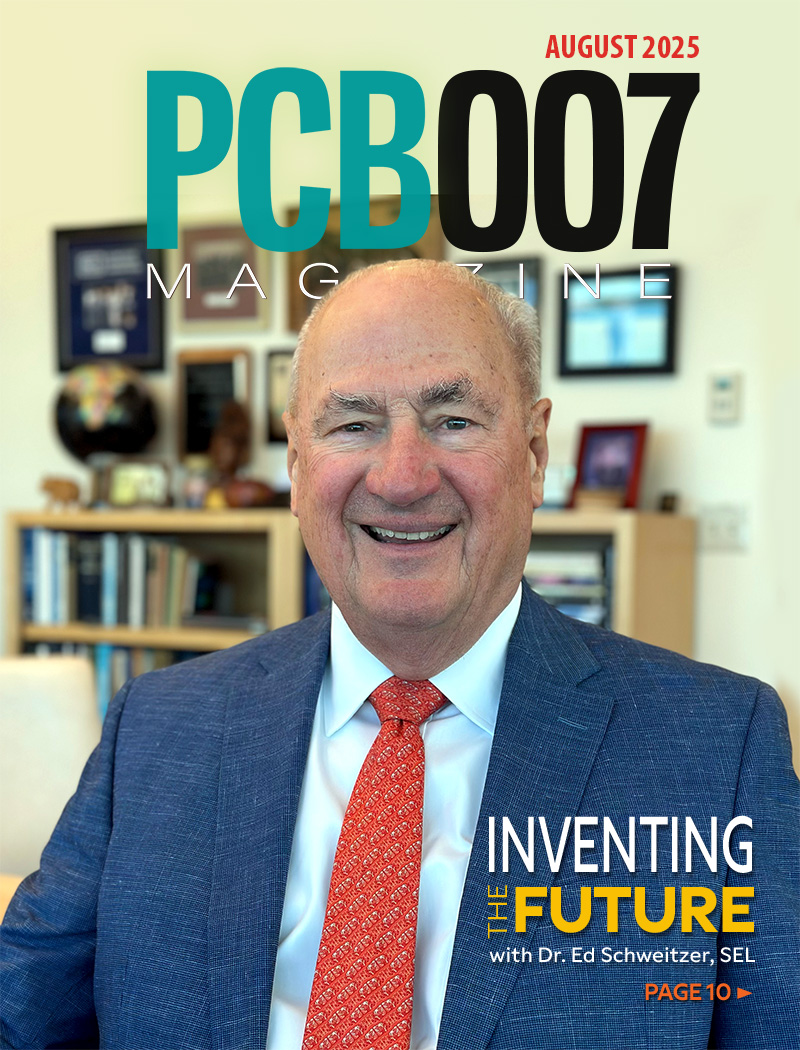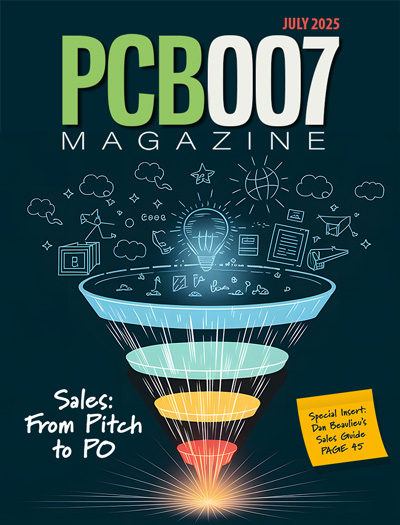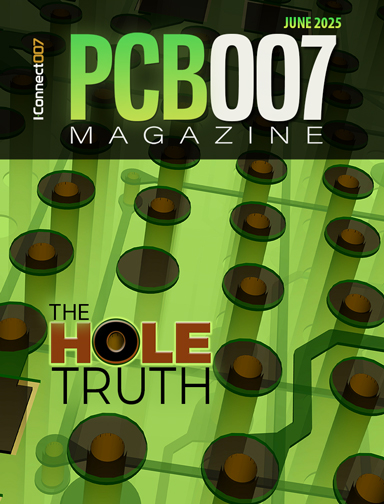-

- News
- Books
Featured Books
- pcb007 Magazine
Latest Issues
Current Issue
Inventing the Future with SEL
Two years after launching its state-of-the-art PCB facility, SEL shares lessons in vision, execution, and innovation, plus insights from industry icons and technology leaders shaping the future of PCB fabrication.

Sales: From Pitch to PO
From the first cold call to finally receiving that first purchase order, the July PCB007 Magazine breaks down some critical parts of the sales stack. To up your sales game, read on!

The Hole Truth: Via Integrity in an HDI World
From the drilled hole to registration across multiple sequential lamination cycles, to the quality of your copper plating, via reliability in an HDI world is becoming an ever-greater challenge. This month we look at “The Hole Truth,” from creating the “perfect” via to how you can assure via quality and reliability, the first time, every time.
- Articles
- Columns
- Links
- Media kit
||| MENU - pcb007 Magazine
Recognizing the Passing of Industry Veteran Brian Keith Fisher
May 13, 2020 | Al FisherEstimated reading time: 1 minute
The PCB industry recognizes the passing of Brian Keith Fisher of Port Orchard, Washington, on Sunday, May 3, 2020. His network of friends and acquaintances was vast as he had worked in many areas of the industry including as a plater, a laminator, in distribution as a manufacturer’s representative, a copper foil supplier, and ultimately for a copper foil manufacturer. Brian might also be considered one of the fathers of using foil cap lamination, instead of the more common core cap, used in the early stages of multilayer construction. In the early '80s, there were only a few fabricators that were interested in this approach which, has become commonplace today.
Brian’s PCB career began in Palo Alto, California, with a company affiliated with Hewlett Packard. Later on, he moved to Everett, Washington, to join John Fluke Manufacturing. His next stop was Mica Laminates in Culver City, California, working in the technical marketing department supplying copper-clad laminates to the electronics industry. He later returned to Washington state, and in 1979, started American Pacific Marketing to provide Northwest fabricators with many of the consumables used in plating and drilling, progressing from his house to a warehouse in Redmond. In 1997, this business was sold to Electrical Insulation Suppliers, and Brian joined forces with them to coordinate sales of APM’s broad product line. Brian left EIS to begin working at Circuit Foil, providing sales and technical support for their products in the U.S.
Later on, he would leave Circuit Foil to begin a new adventure in the agricultural industry, specifically harvesting, storing, and reselling bee pollen to improve crop yields for farmers for a large part of the West Coast. He performed that duty until mid-2019, at which time he fully retired and pursued his real passion for woodworking from his home with some limited commercial applications.
In the 35 years that Brian was in the industry, competitors would tell you he was a tough guy to get out of an account. He was an innovator and was not afraid to try things even though they had never been done before. He was a leader, a mentor, and a friend to many. He will be missed.
Testimonial
"Our marketing partnership with I-Connect007 is already delivering. Just a day after our press release went live, we received a direct inquiry about our updated products!"
Rachael Temple - AlltematedSuggested Items
Driving Innovation: Depth Routing Processes—Achieving Unparalleled Precision in Complex PCBs
09/08/2025 | Kurt Palmer -- Column: Driving InnovationIn PCB manufacturing, the demand for increasingly complex and miniaturized designs continually pushes the boundaries of traditional fabrication methods, including depth routing. Success in these applications demands not only on robust machinery but also sophisticated control functions. PCB manufacturers rely on advanced machine features and process methodologies to meet their precise depth routing goals. Here, I’ll explore some crucial functions that empower manufacturers to master complex depth routing challenges.
Trouble in Your Tank: Minimizing Small-via Defects for High-reliability PCBs
08/27/2025 | Michael Carano -- Column: Trouble in Your TankTo quote the comedian Stephen Wright, “If at first you don’t succeed, then skydiving is not for you.” That can be the battle cry when you find that only small-diameter vias are exhibiting voids. Why are small holes more prone to voids than larger vias when processed through electroless copper? There are several reasons.
The Government Circuit: Navigating New Trade Headwinds and New Partnerships
08/25/2025 | Chris Mitchell -- Column: The Government CircuitAs global trade winds continue to howl, the electronics manufacturing industry finds itself at a critical juncture. After months of warnings, the U.S. Government has implemented a broad array of tariff increases, with fresh duties hitting copper-based products, semiconductors, and imports from many nations. On the positive side, tentative trade agreements with Europe, China, Japan, and other nations are providing at least some clarity and counterbalance.
How Good Design Enables Sustainable PCBs
08/21/2025 | Gerry Partida, Summit InterconnectSustainability has become a key focus for PCB companies seeking to reduce waste, conserve energy, and optimize resources. While many discussions on sustainability center around materials or energy-efficient processes, PCB design is an often overlooked factor that lies at the heart of manufacturing. Good design practices, especially those based on established IPC standards, play a central role in enabling sustainable PCB production. By ensuring designs are manufacturable and reliable, engineers can significantly reduce the environmental impact of their products.
50% Copper Tariffs, 100% Chip Uncertainty, and a Truce
08/19/2025 | Andy Shaughnessy, I-Connect007If you’re like me, tariffs were not on your radar screen until a few months ago, but now political rhetoric has turned to presidential action. Tariffs are front-page news with major developments coming directly from the Oval Office. These are not typical times. President Donald Trump campaigned on tariff reform, and he’s now busy revamping America’s tariff policy.


